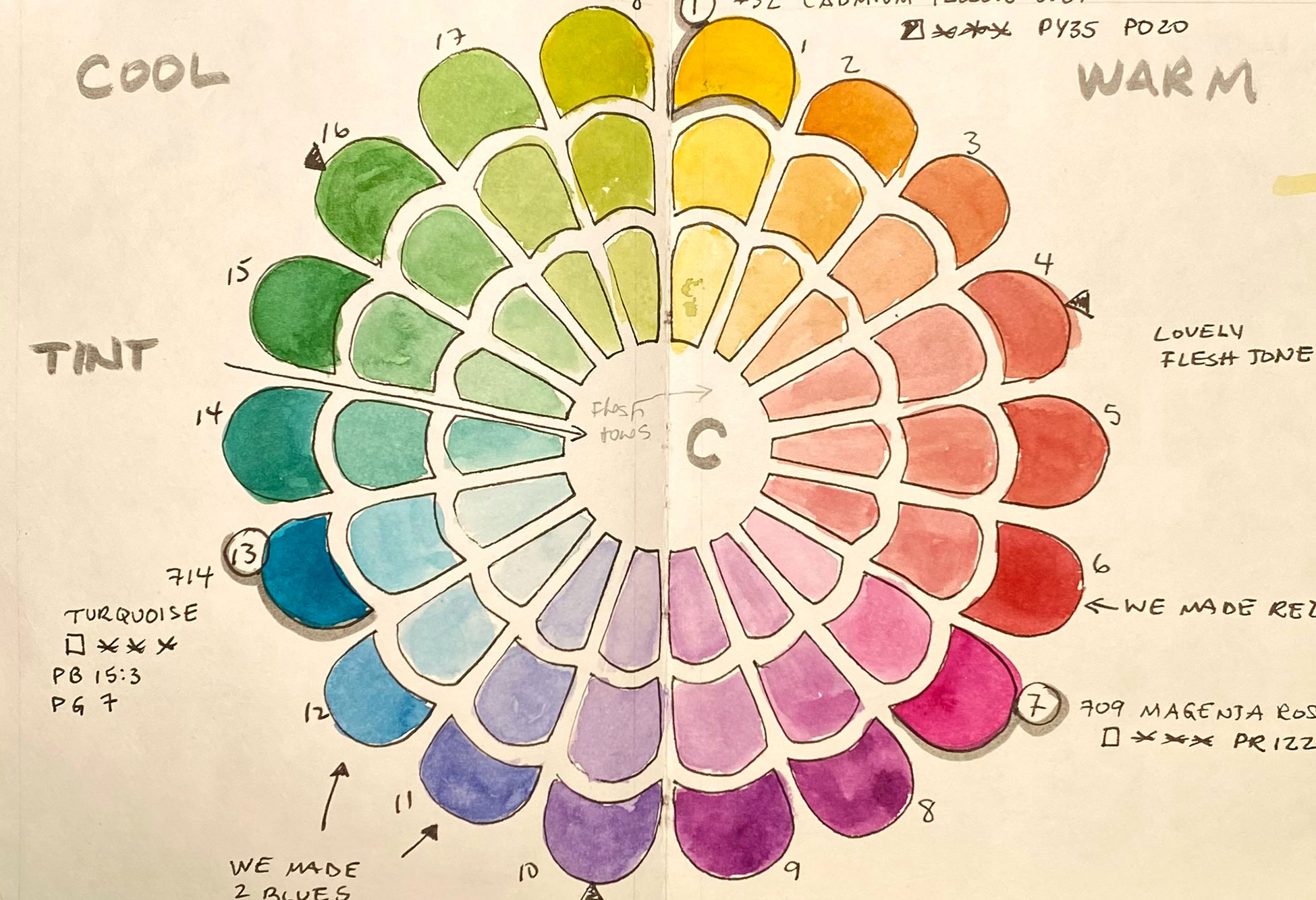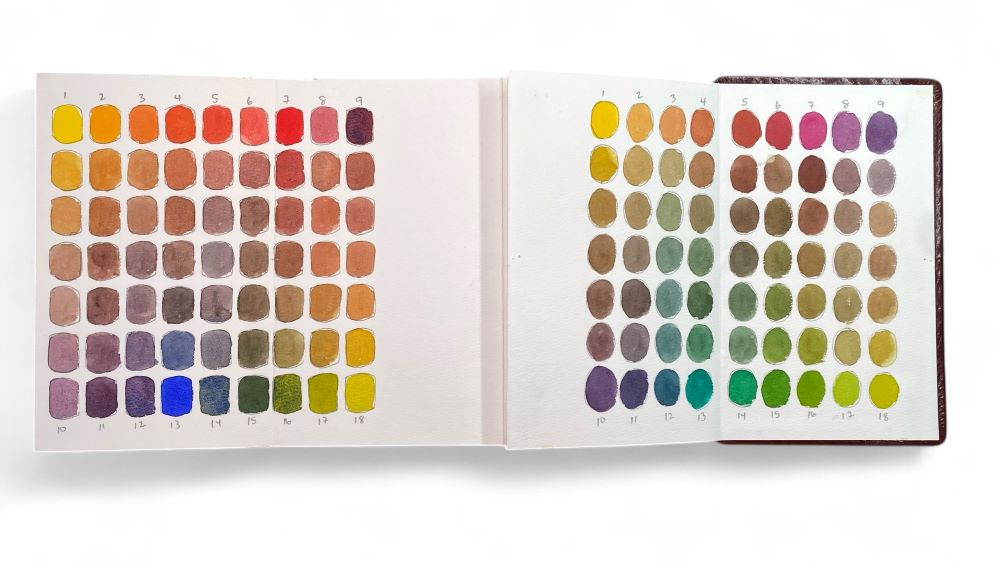The left side of each ColourJot stencil is half of an 18-Point colour circle and holds ‘3 Prime’ colours with 5 mixing spaces between them. The total of eighteen colours will complete the outer circumference of the ColourJot Circle. There are three inner rings for tracking lights by adding water or white (to make shades by adding black) to make jotting a total of 54 colours, quick and easy. The Colour Grid will make an additional 45 colours. Together, the ColourJot system will track 99 unique colours!
Why an 18-point Colour Wheel?
The 18-point colour wheel is designed with a purpose and is different from many other colour wheel examples. Six is too elementary for colour theory; twelve is too few colours, but twenty-four is too many. While teaching colour theory for 30 years, I’ve gotten distracted by the math and geometry of colour theory, and there are so many unique ways to organise colour. ColourJot was created to keep it simple and fun for the students while capturing all the WOW! and ahHA moments I love when teaching colour-mixing.
Here are some of the reasons that 18 became the magic number for ColourJot. This is geeky (and not necessary to know), but it was fun and it helps visualise colour theory and put it to practical use.
- A circle is 360 degrees and divided into 20-degree increments = 18 rays
- 9 warm colours and 9 cool colours = 18 colours
- 3 versions of each of the 6 hues: yellow, orange, red, purple, blue, and green. = 18 colours
- 6 sets of Triadic Scheme (Colours in sets of 3) 3 primary sets and 3 secondary sets = 18 colours
The Colour Circle makes 54 Colours
- Layout of 3 prime colours with 5 mixing spaces between them = 18 colours
- 18 colours x 3 tints (white added or levels of dilution) – 54 colours analogous colours
- 9 complimentary mixes with 5 spaces between them = 45 complimentary colours
- 54 + 45 = 99 colours!

The 7 x 9 Grid Makes Another 45 Colours!
This is where we take warm and cool complementary colours and mix them together. The top of the grid is warm and the bottom of the grid is cool colours. They are numbered to match the colour circle because these are the same colours we mixed in the colour circle. Now we stretch them out in line and add 5 mixing spaces between them.
- 9 complimentary mixes with 5 spaces between them = 45 complimentary colours
- 54 + 45 = 99 colours!
In an accordion book, it is easy to fold out and compare the different colour grids created using different primaries. Building an attractive reference is part of the process of Colourjotting.

Prime Colours are not always Primary in ColourJot
The term ‘Colour Circle’ is used to avoid confusion with the traditional understandings of a colour wheel. Unlike a traditional colour wheels, our colour circles are not based on CYMK or RGB colour theory systems but rather a broader definition of the ROYGBIV models. ColourJot even encourages a random selection of colour, and some colour circles might use only neutral colours. This is not how colour wheels are normally used; therefore, the ColourJot system uses the term ‘Colour Circle’ in place of colour wheel.
The term ‘3 Primes’ is a naming convention because the 3-colour sets used in the ColourJot methods are not always primary colours. ColourJot may use secondary, tertiary or even split complementary. The ‘3 Primes’ are colours straight from the tube (or pan of watercolours) and often selected for being single pigments to give the best results. The colour circles are always harmonious because of the unique organisation of the stages of incremental mixing. Learning happens by discovery, and many of the combinations of the ‘3 Primes’ will yield surprising results.
Not sure where to start? Continue to the tutorials about selecting colours. We have illustrated 6 unique colour sets and show examples of how to use them. If you are inspired, you may buy the colours from our website and recreate the references for yourself. It is a great place to start.